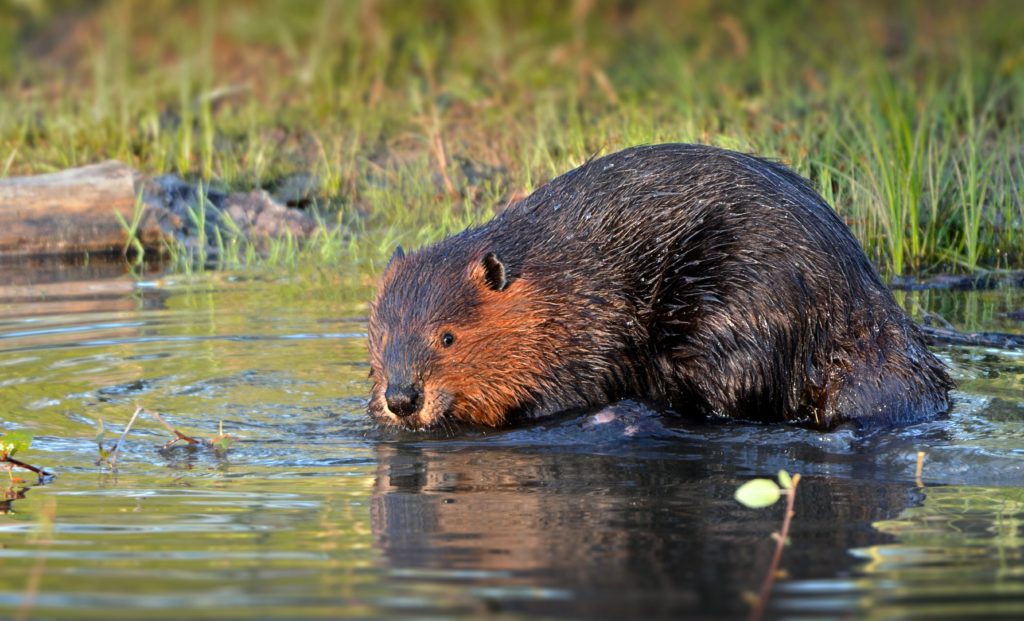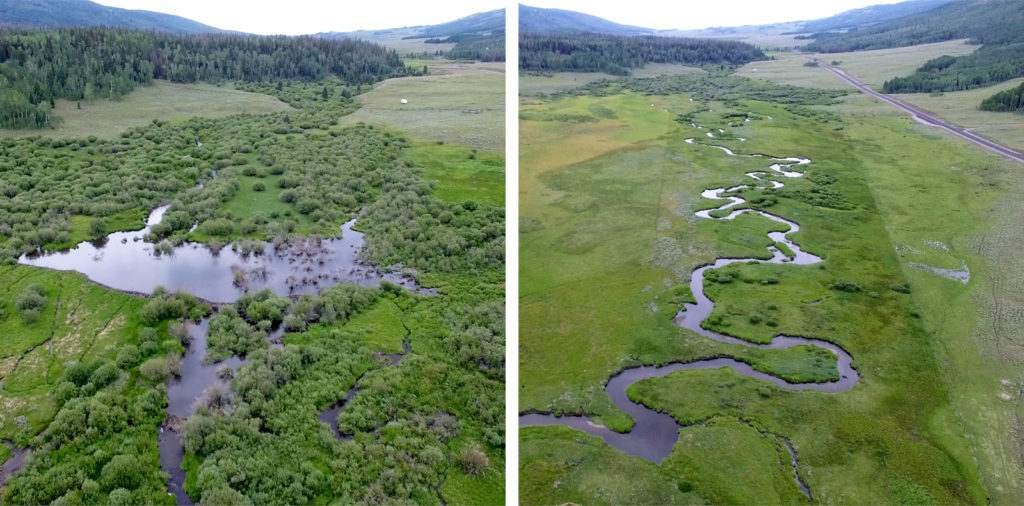
Beavers—members of the family Castoridae—have existed in North America for around 40 million years. It could be argued that the modern North American beaver, Castor canadensis, and its ancestors have had a more profound influence on the physical and cultural landscape of this continent than any other non-human mammal. While it may have a reputation for flooding roads and downing ornamental trees, there is so much more to the beaver. The High Desert Museum’s original exhibition and public art project Dam It! Beavers and Us explores our long and evolving relationship with this oft-overlooked yet valuable animal.
Beavers have been integral to many Indigenous cultures, such as the Blackfeet Nation, for millennia. But the arrival of Euro-American settlers and pressure from the fur trade saw populations plummet. Humans extensively trapped them for their fur, meat, castoreum—an oily secretion from castor sacs used by beaver to mark territory and still occasionally by humans as a flavoring—and other parts. By the late 1800s, they neared extinction. However, due to changing fashion trends, regulations and the rodent’s own resilience, numbers are rebounding.
Today, beavers are gaining greater recognition for their value alive, as ecosystem engineers. There are many ways to coexist with this humble herbivore—and even more reasons why we might want to. Colonies improve water quality, reduce erosion and help other wildlife and plants thrive. Countless species, including humans, benefit from their ponds and wetlands. People have long been drawn to the fertile green meadows that result from beaver activity.

These mammals also mitigate some impacts of climate change. They hydrate the landscape—of great importance in the dry High Desert region. An average beaver dam in the Columbia River Basin can store 1.1 million gallons of water per pond! Their habitats store carbon and serve as vital refugia from wildfires. They also support threatened species, such as steelhead trout.
In Dam It! Beavers and Us, we playfully explore the past, present and future of this remarkable rodent and its interconnection with humans. This keystone species has whittled its way into the hearts of people from all walks of life—ranchers, ecologists, artists and architects. Many have dedicated themselves to the return of the beaver. Visit the exhibition to discover why so many now see the beaver more as a partner than a pest. Meet the extinct, bear-sized beaver, Castoroides ohioensis, and learn why beavers once were parachuted in wooden boxes into Idaho wilderness.
Additionally, the Museum will install several four-foot-tall beaver sculptures in public spaces. A different artist will paint each fiberglass sculpture in their own, unique style. Project artists include Sweet Pea Cole, Ellen Taylor, Jess Volk and Andries Fourie. Be ready to spot some new, vibrant art around Central Oregon!
